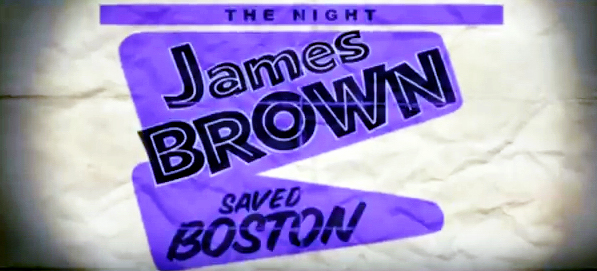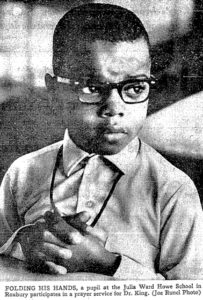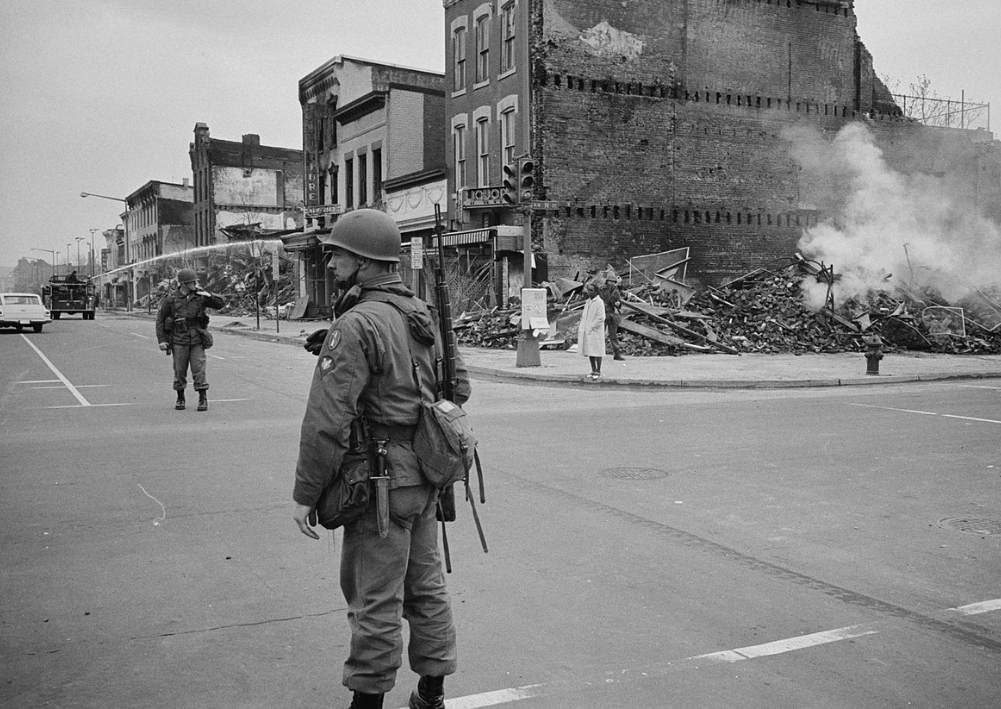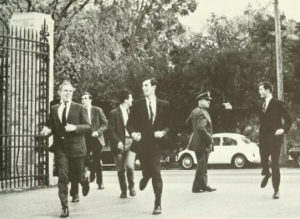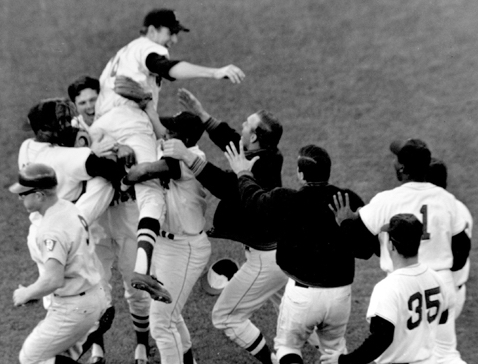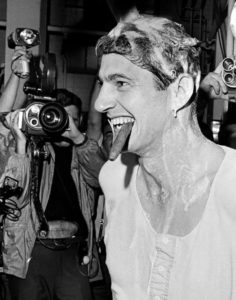Much of the nation awoke on April 5, 1968, sad and worried. Sad because Martin Luther King had been shot and what that reflected about America, worried both about the long-term future of race relations and the immediate possibility of civil unrest. The summer of 1967 had been marked by more than 150 “riots” across the country, and many, probably most, thought the assassination of the civil rights leader would elevate anger throughout the country to dangerous levels.
The day in the Boston area was marked by essentially peaceful marches, demonstrations, and ceremonies, many on a small scale, some on a large scale. The Boston Globe ( BGlobe_MLK_040668 ) reported that about 5,000 people, mostly white, marched from the Boston Common to Post Office Square downtown to listen to speeches. Another 5,000 people attended services in Marsh Chapel Plaza at Boston University, where Dr. King had studied. And thousands of Boston school children attended services in their schools.
There was still a high level of anxiety. Classmate Anne Waytola Bishop was a nursing student on a regular assignment at the Harvard Street Health Center in Mattapan that day. “The School (of Nursing) sent a cab to pick me up and bring me back to campus. I remember naively thinking, Why? I had just been out on a home visit. How could I be in danger? I was just sad.”
The day was peaceful, but what about the night? Soul singer James Brown was scheduled to perform in the Boston Garden that night. Frantic negotiations took place among Boston police and city officials, including Mayor Kevin White; Brown’s representatives; and WGBH Channel 2, Boston’s “educational” channel during the day. It was agreed that Brown’s performance would be televised by Channel 2. That way, a lot of people might stay in their homes to watch and not be out on the street. I remember watching the telecast at the Tam O’Shanter Room in Brookline. Who else remembers watching that night?
There is a documentary about all that. It’s entitled “The Night James Brown Saved Boston.” It’s full length — just under an hour and 15 minutes — but it is a comprehensive, valuable, and moving look back at what was a momentous night and could have been a tragic night. There are talking heads . . . talking . . . (I believe it was made in 2008 for VH1), but also lots of contemporary film, showing Mayor White and other local luminaries, as well as, of course, segments of the performance. There are some elements that sound “jarring,” just because they sound “incorrect.” The WGBH announcer, in a tone familiar to those who listened to the Boston Symphony broadcasts, referred to the upcoming concert “by Negro singer Jimmy Brown and his group.” It is definitely worth watching. (If you click on the title at upper left, you’ll see it on YouTube.)
Classmate Carmine Sarno was at the Garden that night. “Honest to God, I was there. I had four tickets, but I could not get anyone to join me. Three tickets died in my pocket. It was a great concert. James Brown was a favorite of mine. We had great entertainers at that time. I went alone. There was one other white face there — Mayor White.”
The televised concert tactic pretty much worked. Boston was among the few major cities not to suffer unrest. (Other channels in other cities might also have broadcast the concert, but this was before the Public Broadcasting Service [PBS].) More than 100 cities saw unrest following the assassination, with the most significant damage occurring in Chicago, Baltimore, and Washington, D.C.
In Washington, President Johnson dispatched 13,600 federal troops to assist the District’s police force. Marines mounted machine guns on the steps of the Capitol and Army troops guarded the White House. At one point, on April 5, rioting reached within two blocks of the White House. The District imposed a curfew and banned the sale of alcohol and guns in the city. By the time the city was considered pacified on Sunday, April 8, some 1,200 buildings had been burned, including more than 900 stores. Damages reached $27 million.
The Heights came out on Tuesday, April 9. Campus events marking the death of Dr. King were to occur that day. We’ll have a post about that on the 9th.

